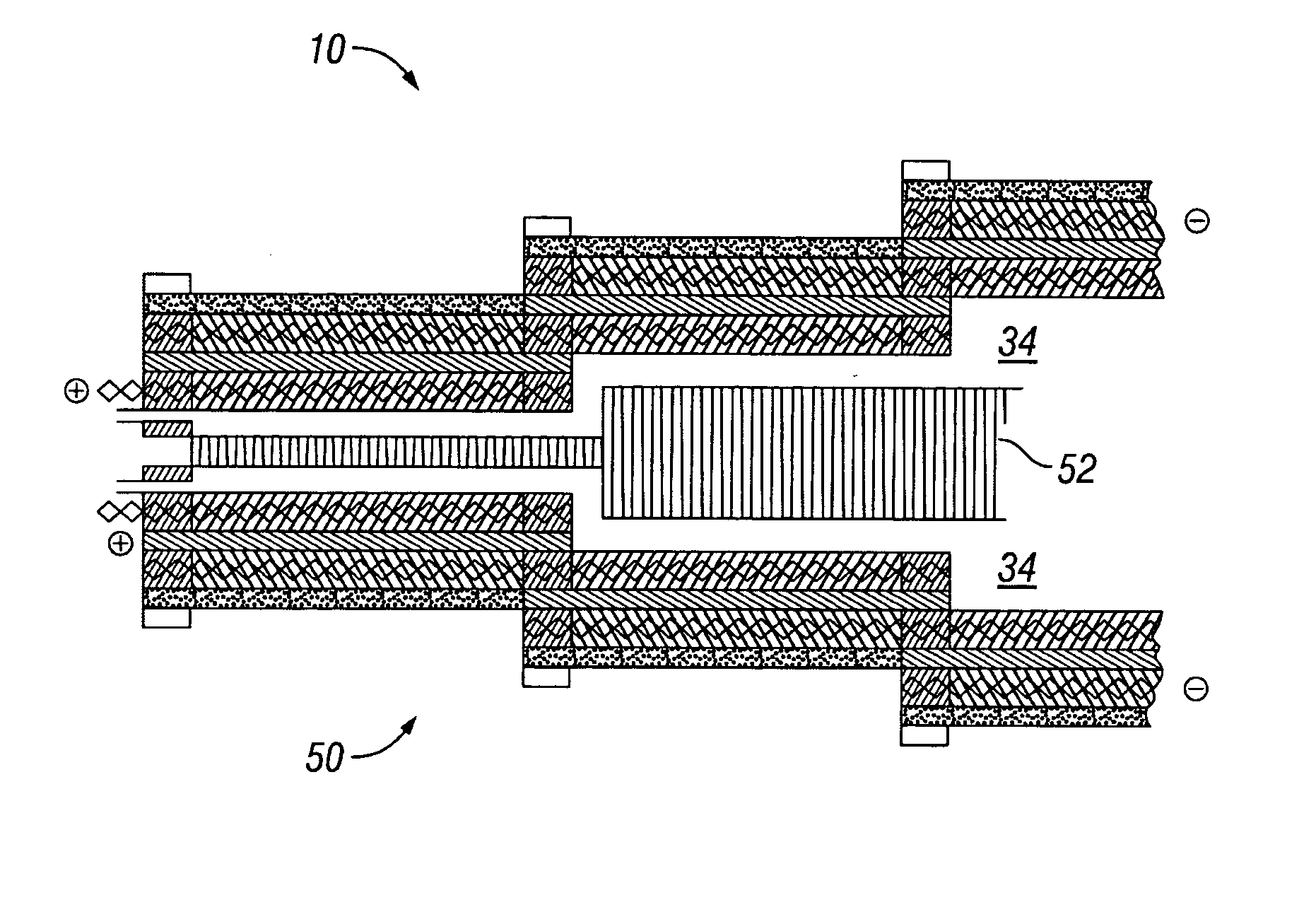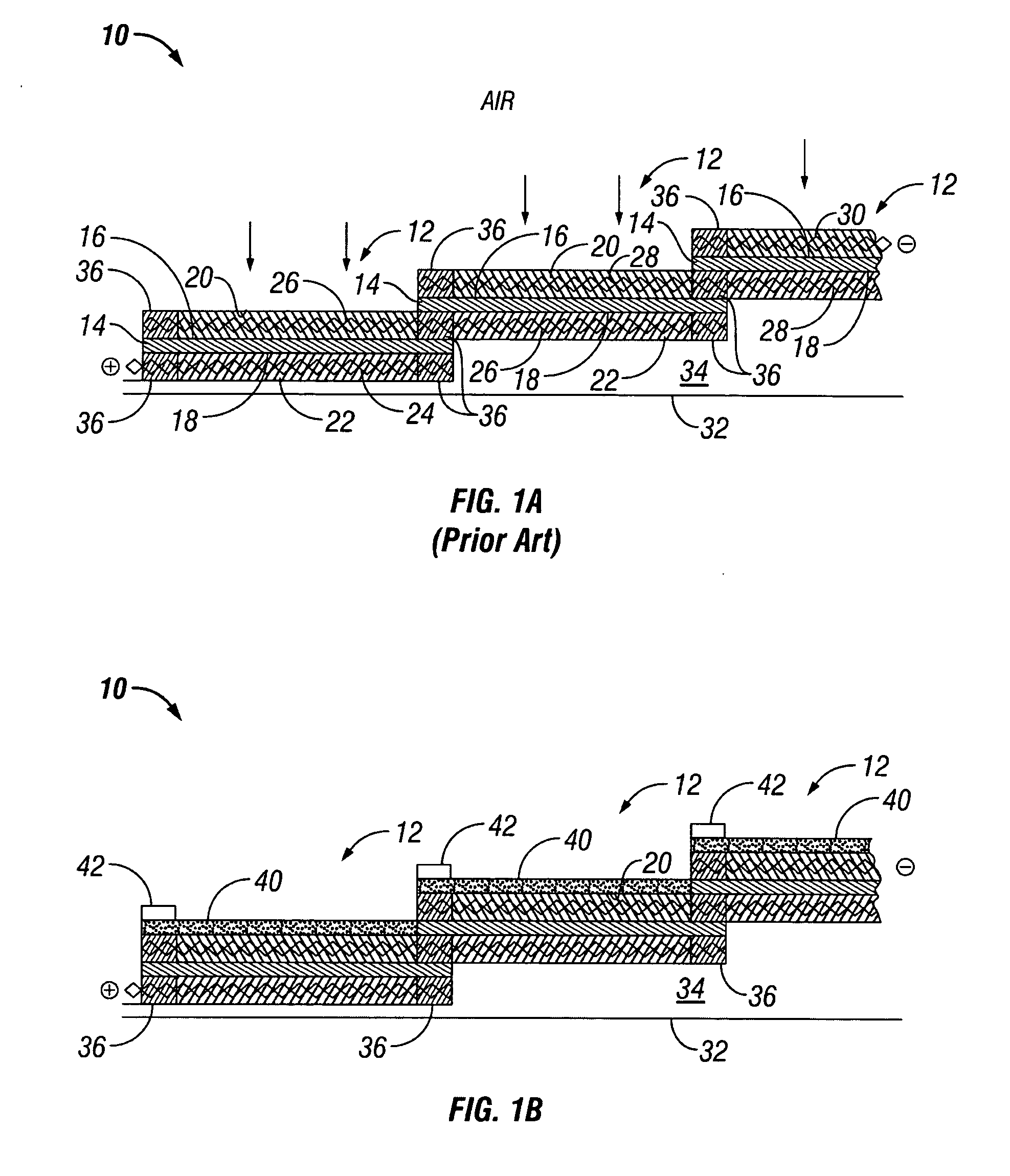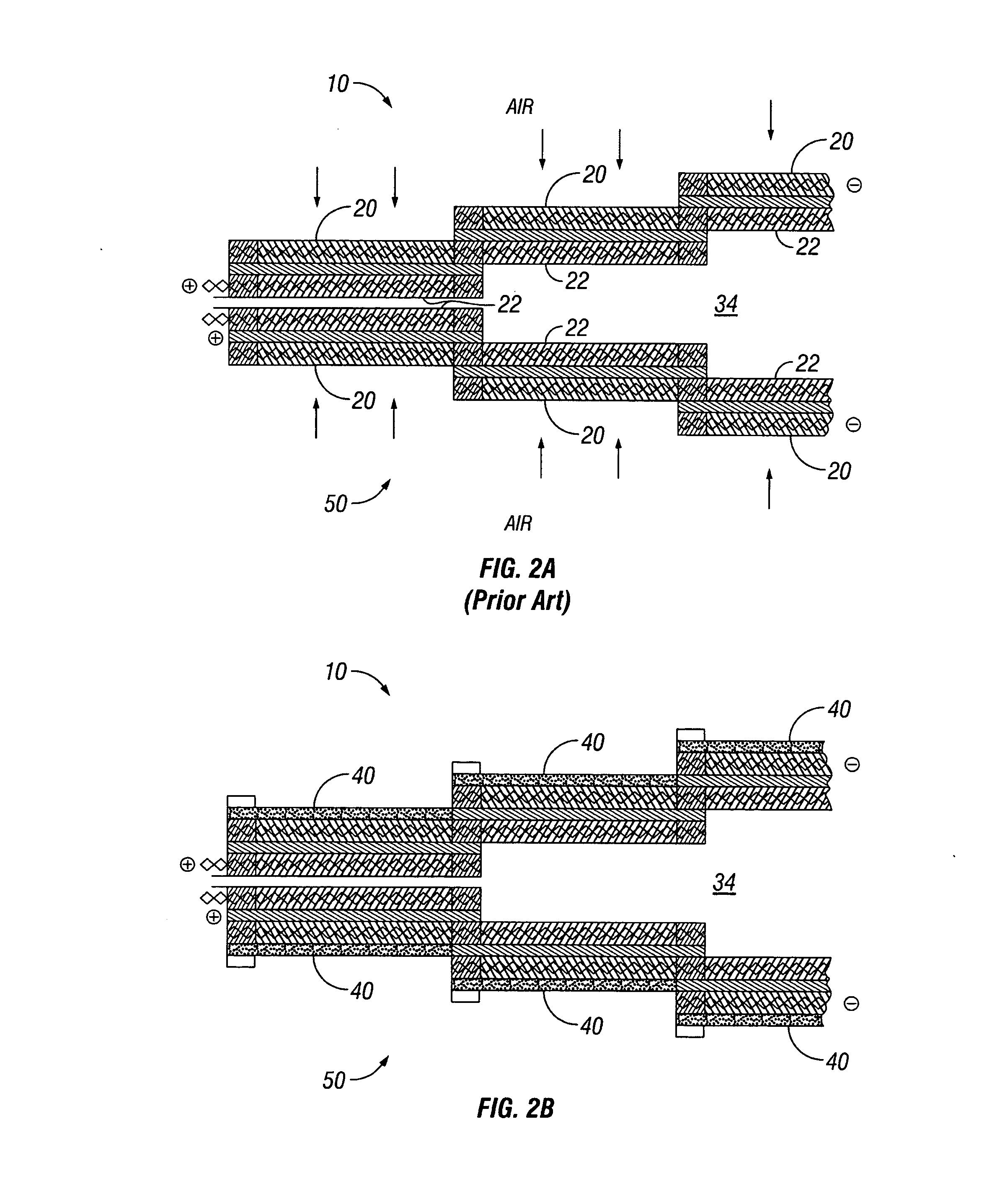Water management in monopolar fuel cells
a fuel cell and monopolar technology, applied in the field of monopolar fuel cells and monopolar fuel cells, can solve the problems of limited thinness of flexible organic polymer ion exchange membranes used as solid polymer electrolytes in fuel cells, limited membrane drying effect of fuel cells, and increased sensitivity of fuel cells to external elements, etc., to achieve the effect of reducing the number of fuel cell ions
- Summary
- Abstract
- Description
- Claims
- Application Information
AI Technical Summary
Problems solved by technology
Method used
Image
Examples
example 1
[0087] Two identical five-cell, monopolar fuel cell stacks, similar to that shown in FIG. 3(a), were fabricated. Each stack was constructed with identical components including Nafion® 112 membranes as the PEM electrolyte, Pt black for both the anode and cathode electrocatalysts, and a reactively cured gas diffusion layer applied to a gold plated expanded titanium grid current collector for both the anode and cathode. One of the fuel cell stacks was modified with the addition of a porous liquid water retention barrier covering the entire five-cell cathode surface, similar to that shown in FIG. 3(b). The barrier was secured to the fuel cell along the entire perimeter of the stack to prevent any entry of reactants or exit of products from bypassing the barrier. The barrier used was electronically insulating (electronically non-conducting) and consisted of a sheet of expanded polytetrafluoroethylene (PTFE). The pore size of the barrier was between 35 and 50 nanometers. The sheet was att...
example 2
[0089] The two monopolar fuel cell stacks described in Example 1 were operated as described there. After an initial warming up period, both stacks were held at a constant 1.5 Amps of current. The ambient room temperature was about 25° C. After about three hours the ambient temperature was raised from 25 to 42° C. Initially the performance of both stacks was stable, but eventually the performance of the stack without the porous liquid water retention barrier began to decline, as the proton exchange membrane began to dry out. The performance of the stack with the porous liquid water retention barrier remained steady, as shown in FIG. 8.
example 3
[0090] While the monopolar fuel cell stacks described in Example 1 were operating at 25° C., all of the liquid water found in the exiting fuel stream was collected. This was used as a gauge of the amount of water returned from the cathode to the anode as a result of back diffusion though the proton exchange membrane solid polymer electrolyte. It was observed that the stack with the added porous barrier produced substantially more liquid water at the anode. This further demonstrates the effectiveness of the barrier for retaining water within the cell.
[0091] The terms “comprising,”“including,” and “having,” as used in the claims and specification herein, shall be considered as indicating an open group that may include other elements not specified. The term “consisting essentially of,” as used in the claims and specification herein, shall be considered as indicating a partially open group that may include other elements not specified, so long as those other elements do not materially ...
PUM
| Property | Measurement | Unit |
|---|---|---|
| pore size | aaaaa | aaaaa |
| pore size | aaaaa | aaaaa |
| thicknesses | aaaaa | aaaaa |
Abstract
Description
Claims
Application Information
 Login to View More
Login to View More - R&D
- Intellectual Property
- Life Sciences
- Materials
- Tech Scout
- Unparalleled Data Quality
- Higher Quality Content
- 60% Fewer Hallucinations
Browse by: Latest US Patents, China's latest patents, Technical Efficacy Thesaurus, Application Domain, Technology Topic, Popular Technical Reports.
© 2025 PatSnap. All rights reserved.Legal|Privacy policy|Modern Slavery Act Transparency Statement|Sitemap|About US| Contact US: help@patsnap.com



